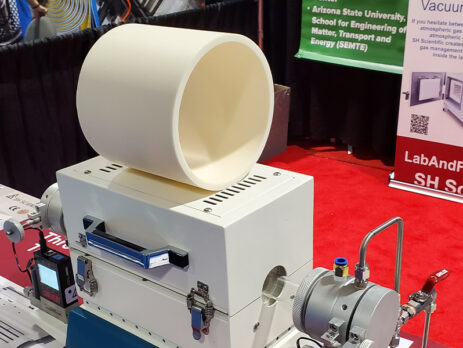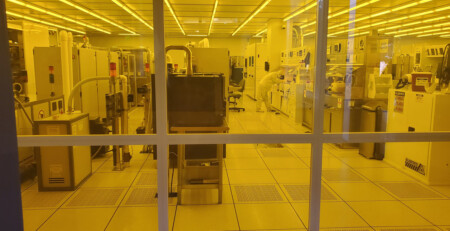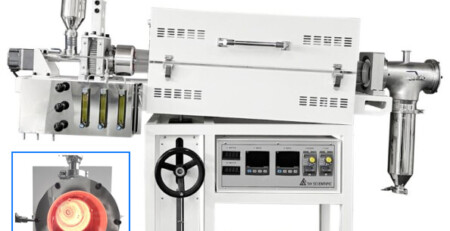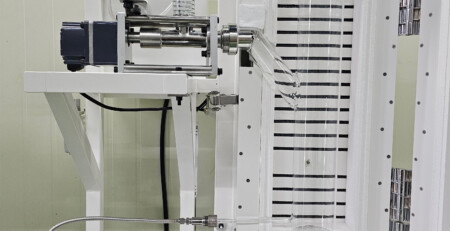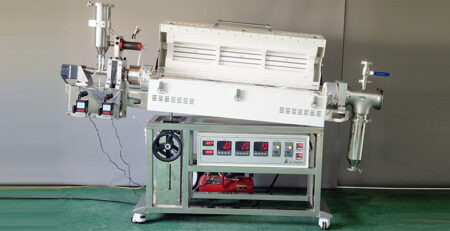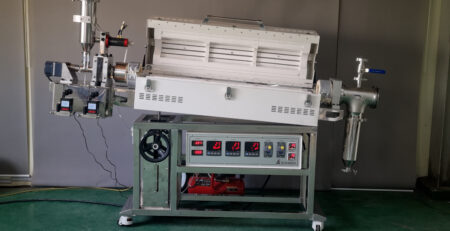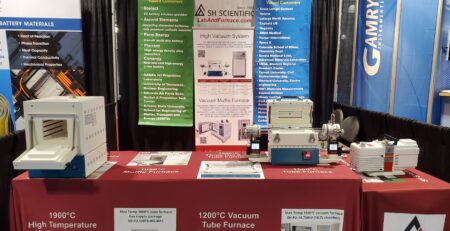Large-Diameter Tube Furnace
Tube furnaces play a pivotal role in silicon wafer preparation for cutting-edge power electronics.
With precise thermal and atmospheric control, labs can perform consistent annealing for predictable conductivity.
However, as researchers push toward ever-wider wafers, tube diameter itself becomes a constraint.
SH Scientific tube furnaces accommodate wafers up to 10″ in diameter, with world-class performance and a compelling price.
Background: annealing & performance of 4H-SiC
The semiconductor space is a terrific example of how high-quality tube furnaces enable practical discoveries.
For instance, it’s well known that silicon carbide (4H-SiC) is an excellent semiconductor in high-power scenarios. Silicone carbide is characterized by low diffusion of dopants, so preparation usually involves ion implantation (e.g., from aluminum). High-temperature annealing activates the dopant, leaving positively charged (p-type) regions used for Shottky diodes, JBS diodes, and MOSFETs.
Doping and annealing protocols determine Ohmic behavior, yet optimal protocols remain an open question.
And that’s what Spera et al. investigated in their 2019 paper Ohmic Contacts on p-Type Al-Implanted 4H-SiC Layers after Different Post-Implantation Annealings.
The authors prepared p-type 4H-SiC layers with Al ions, and annealed them under the following conditions:
- 1675° C for 30 minutes
- 1775° C for 15 minutes
- 1825° C for 15 minutes
Predictably, resistance fell as temperatures increased.
Next, they turned their attention to Ti/Al/Ni contacts. These are often used on n-type 4H-SiC layers, but exhibit much higher resistance on p-type layers. Heat treatment seemed likely to reduce resistance by activating Al ions, so the researchers annealed the coated layers at 950° C in argon for 1 minute.
The resulting barrier height of 0.63 was similar to that of Ti/Al contacts (which others have recommended for 4H-SiC devices).
Microscopic examination showed increased surface roughness and mixing of the contact metals after heating, which likely explains the improved Ohmic behavior.
This finding supports the viability of Ti/Al/NI contacts even on p-type 4H-SiC layers. It suggests a path toward more efficient and cost-effective high-power devices for large consumer products (such as electric vehicles), renewable energy technologies, and even aerospace products.
Tube furnaces for silicon carbide treatment
Why, exactly, are tube furnaces essential to this and other semiconductor research?
For materials like silicon carbide, there are two overarching priorities:
- Precise and uniform heating, since modest gradations in annealing temperatures have a large effect on semiconductor resistivity.
- Strict atmospheric control (typically argon gas saturation) to prevent any opportunity for oxidation.
Tube furnaces are usually the equipment of choice thanks to exceptionally even heating and nearly perfect inert gas saturation.
As Spera and colleagues demonstrated, these factors make the difference between unusable versus efficient final materials.
But as labs push toward wafers beyond 6″ in diameter, suitable tube furnaces become hard to find.
SH Scientific’s large-diameter tube furnace
Our large-diameter tube furnaces are ready to ship, easy to customize, and available as a turn-key package with a chiller and gas management system.
When it comes to high-heat semiconductor preparation, two features in particular stand out.
Resilient alumina tubes for extreme heat
Quartz is a cost-effective tube material, but it begins to melt around 1200° C.
Alumina is better suited to items like 4H-SiC wafers, which are often annealed at temperatures above 1800° C.
(Note that alumina is especially prone to thermal shock. It’s prudent to heat any furnace slowly, but it’s absolutely critical with these models.)
The catch is that alumina ceramics are more difficult to source—at least with the level of material purity and quality control we expect. We’ve spent years testing components and cultivating supplier relationships to ensure our high-temperature tube furnaces remain ready to order.
Innovative doors for large useful diameter
Tube diameter alone isn’t the whole story. Doors are often more restrictive, reducing the effective diameter by an inch or two.
We’ve engineered our way around that problem. Our door design doesn’t impede sample size, so you’re able to use every millimeter of the diameter you’ve paid for.
In addition, our entire door assembly uses an energy-efficient water cooling system to maximize gasket longevity and vacuum performance.
Finally, its hinged design makes for easy loading and unloading. Unlike many alternatives, there’s no disassembly required for each use. In fact, that’s a main reason our doors are a popular upgrade among labs that use other furnace brands.
Configuring your SH Scientific tube furnace
SH Scientific tube furnaces are available with:
- Extra-large alumina tubes of OD 150/ID 138 mm (5.4″), OD 200/ID 186 mm (7.3″), or OD 274 / ID 259 mm(10.2″) for wafers up to 10″ in diameter.
- Up to 1800° C maximum temperature.
- Up to three, PID-controlled hot zones.
- An optional high vacuum pump.
- An optional turn-key package with a vacuum pump, recirculating chiller, mass flow controller, and back pressure regulator.
Beyond these standard options, our in-house design and engineering teams can realize almost any custom requirements.
Whatever the configuration, count on the same performance you expect from familiar brands—at prices that help budgets stretch farther.
For technical details, customization requests, or general assistance, reach out to our US sales team today.

